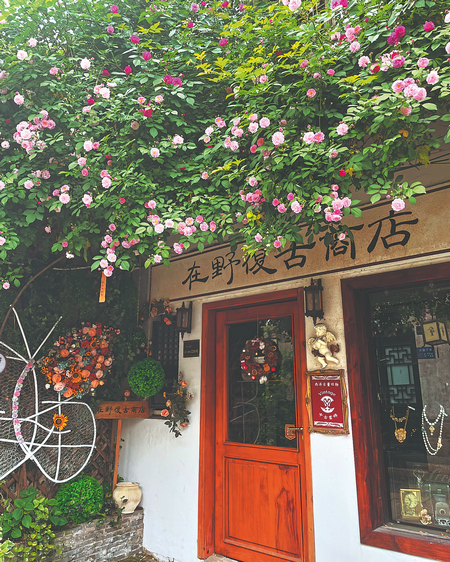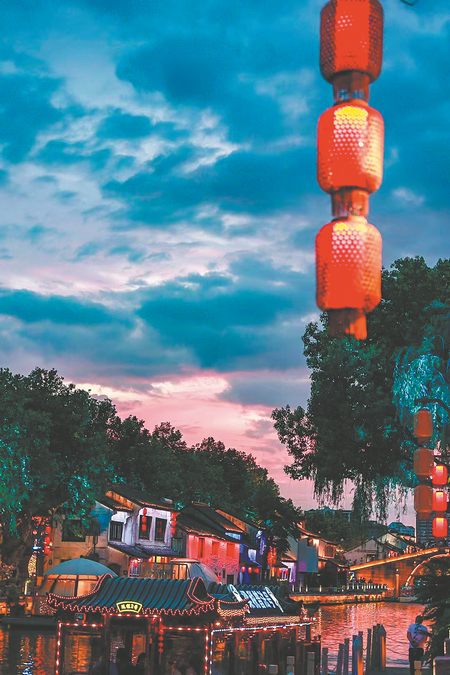
Blooming flowers adorn the front door of a store in Qingmingqiao area, Wuxi.LI YINGXUE/CHINA DAILY
The Grand Canal serves as an umbilical link that has nurtured the development of Wuxi's Qingmingqiao area from its infancy until today.
Every week, Feng Qiuxia and her husband visit her 88-year-old mother, who lives in Qingmingqiao, a historical block along the ancient Grand Canal in Wuxi, Jiangsu province. Together, they enjoy solace by the tranquil pier near the Wuxi Kiln Site Museum, where they watch the gentle flow of the river and the lively bustle of passersby.
Feng's mother earned her living firing kilns in her youth, and today, she continues to call this historical haven home.
"Life is much easier now, with better infrastructure and facilities," Feng says.
Feng's grandfather also used to make bricks in kilns along this riverbank. Wuxi has a long history of pottery making, and today, many descendants of these kiln workers still live in this area. While they have switched livelihoods, such as opening guesthouses or restaurants, they all maintain strong ties to this neighborhood.
The Qingmingqiao historical and cultural district sits where the ancient Grand Canal meets Bodu port. Its layout of roads and waterways still retains the charm of Jiangnan, a region located around the lower reaches of the Yangtze River, with its quaint bridges and riverside homes.
In recent years, Wuxi's government has worked to preserve and repurpose key cultural sites and traditional homes along both sides of the ancient canal.
The district is employing its century-long legacy of industry and commerce to develop new attractions, including the kiln site museum, the former residence of Qing Dynasty (1644-1911) entrepreneur Zhu Dachun and the Maoxing Flour Mill.

Traditional-styled houses on the riverbank are transformed into restaurants offering authentic local cuisine.LI YINGXUE/CHINA DAILY
By connecting these sites and showcasing special exhibitions along the canal, the district highlights its diverse cultural heritage, including canal life, industrial and commercial activities, and the unique lifestyles of water towns.
Today, the area retains its original charm, with old residences, shops and historical sites coexisting harmoniously. Along the canal, visitors can find restaurants, cozy bookstores and engaging museums, creating an immersive "living museum" of the Grand Canal.
During the day, the streets buzz with residents picking vegetables and fixing shoes by the waterway, generating a quaint, rural vibe. Come nightfall, the area transforms with bustling eateries and lively entertainment.
Special light shows like Eyes on the Canal add to the nighttime charm, creating a vibrant cultural scene.
This bustling nightlife not only attracts tourists but also offers locals a way to unwind. With over 300 businesses, the area welcomes nearly 30 million visitors annually. During the recent May Day holiday, it was particularly busy, receiving 380,000 visitors on May 1 alone.
Editor Ⅰ: Zhang Wenwen
Editor Ⅱ: Wu Dan
Editor Ⅲ: Liu Guosong














